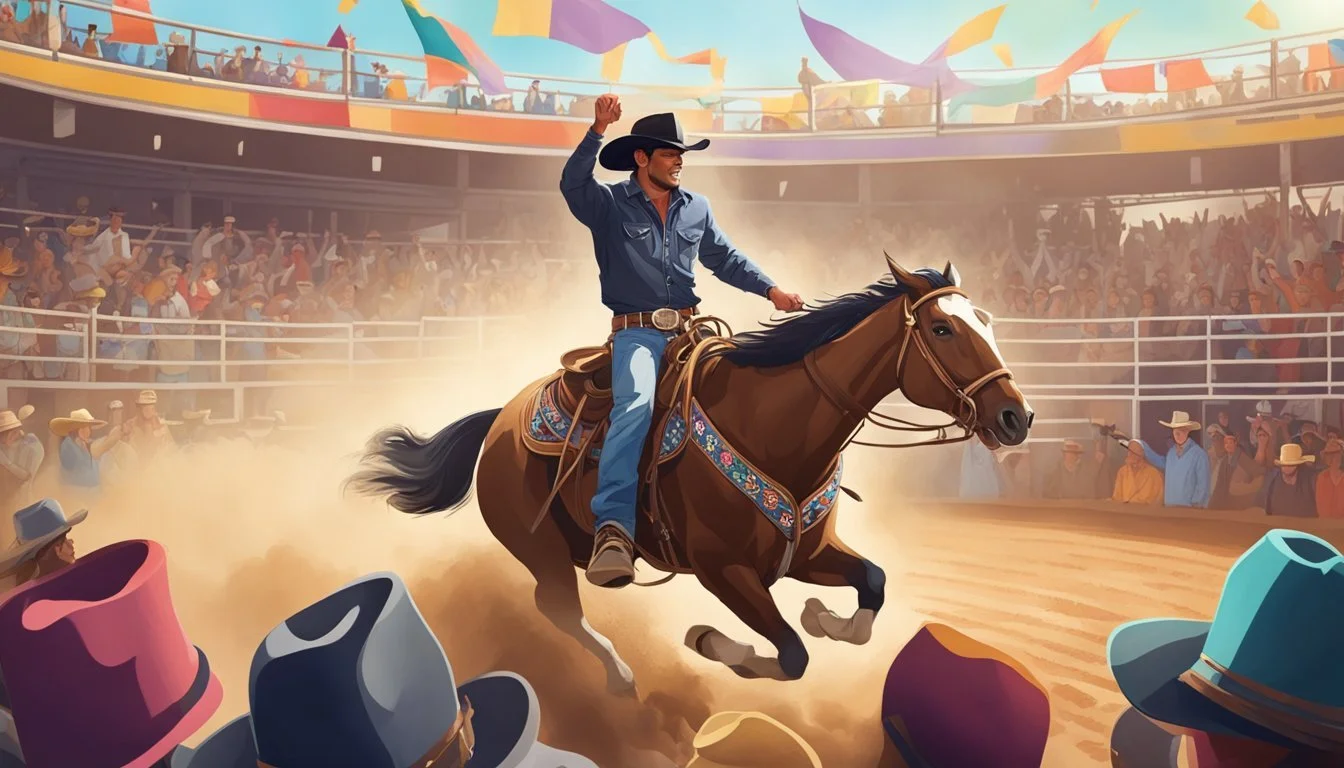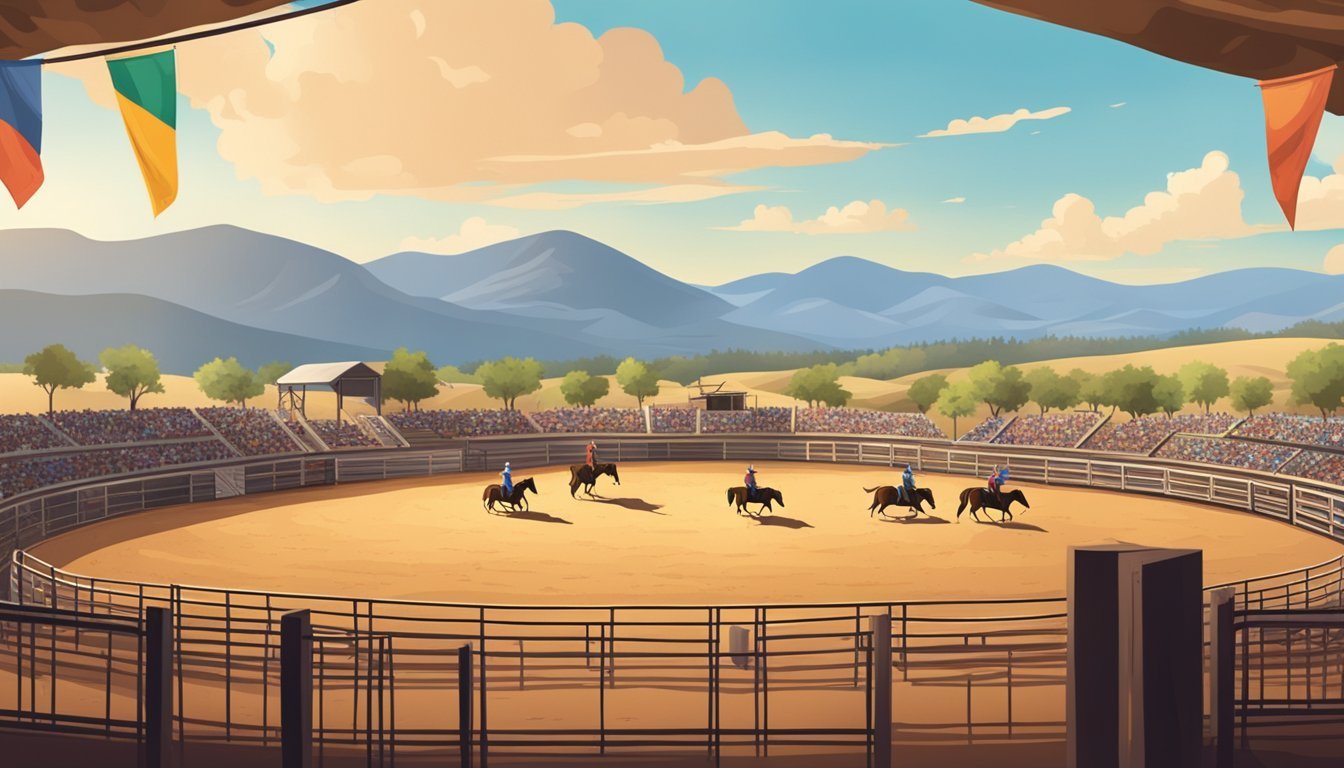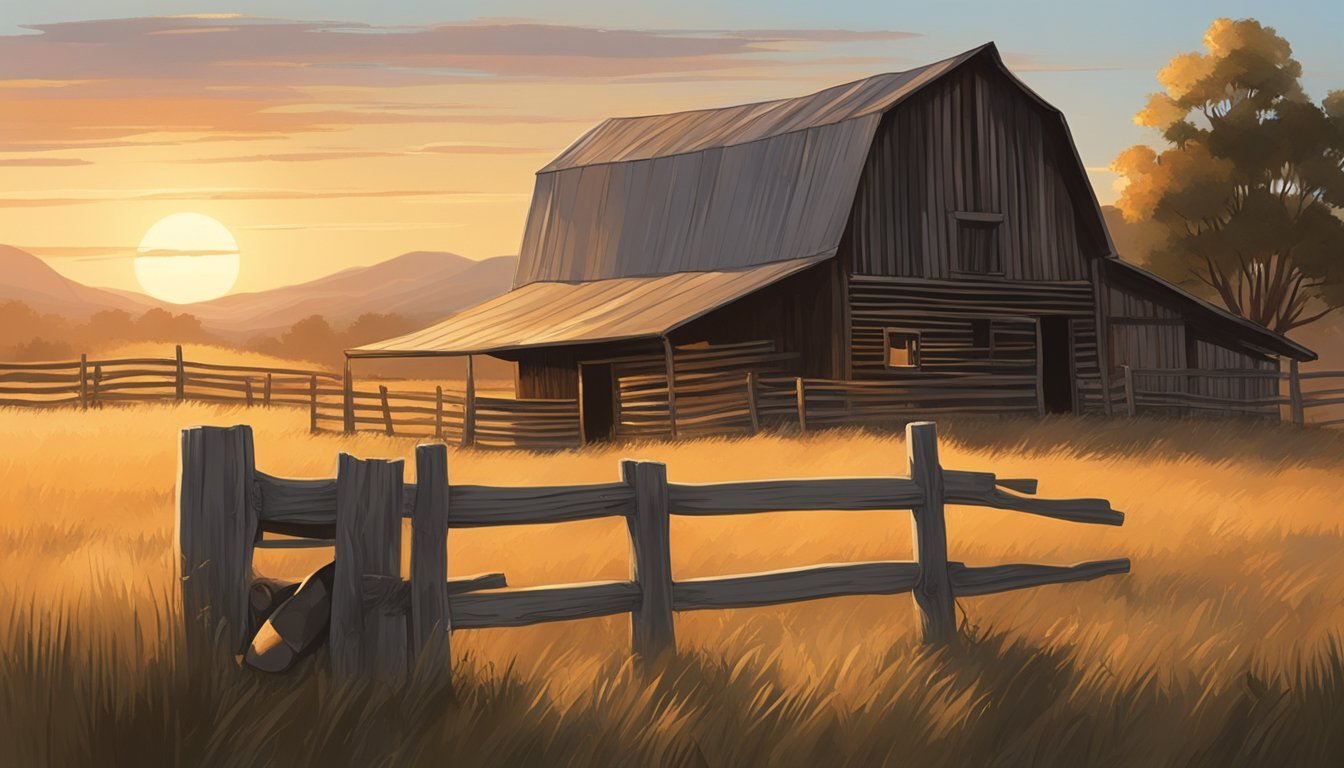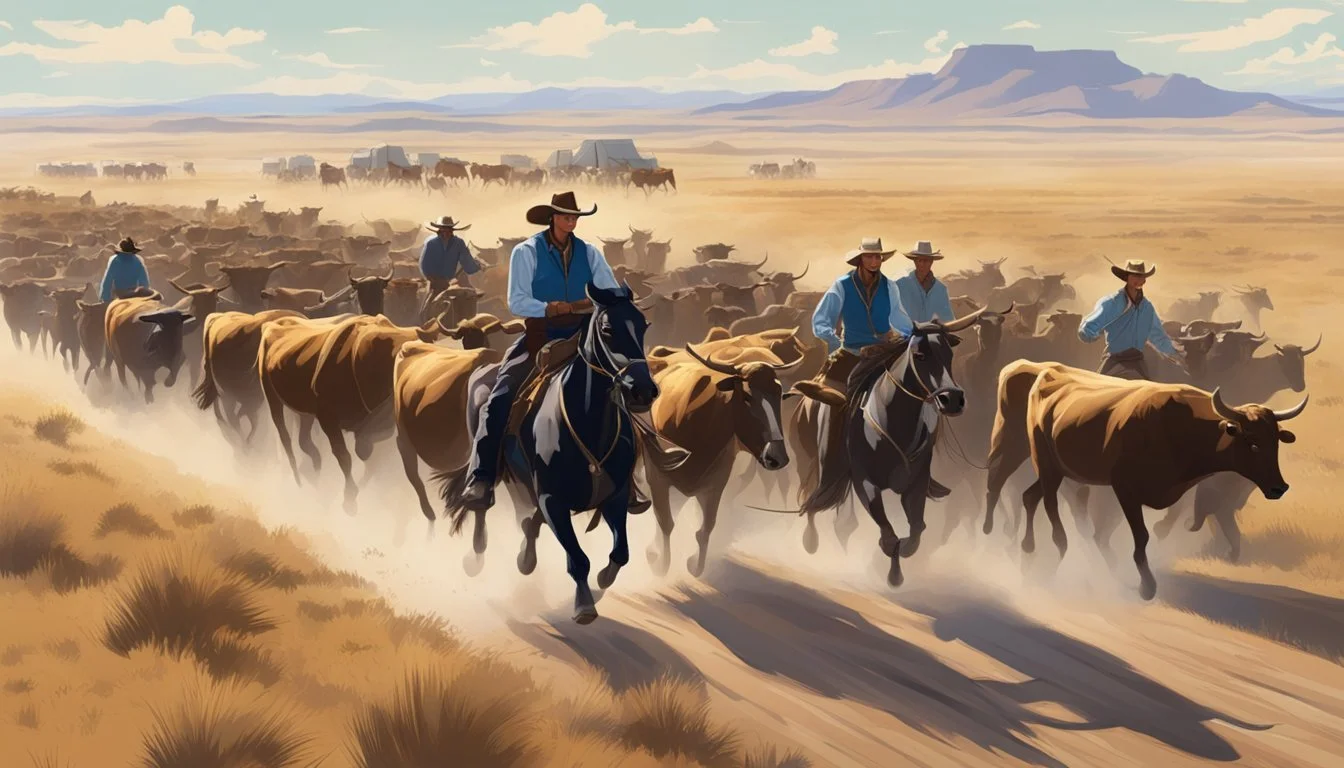The Texas Cowboy's Guide to Premier Western Themed Rallies Nationwide
The Texas cowboy legacy is deeply etched into the very fabric of the American West. With a rich history that dates back to cattle herding and the open range, the cowboy has become an iconic symbol of Texas culture and heritage. Today, Western-themed rallies across the Lone Star State offer enthusiasts a chance to immerse themselves in the experiences that celebrate this timeless American figure. Visitors can expect a blend of traditional Western hospitality, authentic cowboy activities, and a taste of the rugged lifestyle that was once a reality for the early settlers of Texas.
From the historic cattle drives in Fort Worth Stockyards to the sprawling, family-friendly dude ranches, Texas provides a plethora of opportunities for those looking to explore cowboy culture. Attendees can witness the grandeur of cowhands driving herds through the Chisholm Trail, exactly where the Old West still thrives, twice daily in Fort Worth. Additionally, these rallies often include rodeos, country music, and horseback riding, allowing people of all ages to step into the boots of a cowboy, if only for a day.
The state's Western-themed destinations also boast interactive and educational elements, ensuring that while guests are having fun, they're also learning about the historical significance of the cowboy lifestyle. In Dallas, for instance, one might marvel at the world's largest bronze monument in Pioneer Plaza, where 40 Texas longhorns are driven by three larger-than-life cowboys. Here, the past and present merge, providing a continuous narrative of Texas' cowboy heritage and its impact on American culture. Whether one seeks adventure, nostalgia, or simply a break from the modern world, Texas' Western rallies are sure to deliver an experience as enduring as the cowboy spirit itself.
The Roots of Texan Cowboy Culture
The Texan cowboy culture stems from a rich heritage influenced by Spanish vaqueros and Native American traditions, characterized by its enduring customs and significant impact on the state's identity.
Historical Overview
Texan cowboy culture originated in the 1800s, when extensive cattle drives from Texas to northern markets necessitated skilled horsemen and cattle handlers. The demand for beef in the United States grew, catalyzing the cowboy's rise as a central figure in Texas' agricultural and economic development.
Cattle Drives: Initiated in the early 1800s, these drives were crucial in shaping the cowboy profession. Cowboys were responsible for herding cattle over long distances to railheads where the livestock could be shipped to the lucrative markets in the north.
Ranching Evolution: Texas ranches expanded as the industry thrived, evolving from unfenced lands to the establishment of large-scale ranching operations, exemplified by the XIT Ranch, once the largest in the world.
Influence of Vaqueros and Native Americans
The cowboy's skills and techniques were heavily influenced by cultures pre-dating their own.
Vaqueros: Spanish for cowboys, they were the first to manage cattle in Texas, introducing essential cowboy skills such as riding, roping, and herding that became the foundation of cowboy techniques.
Herding and Horsemanship: Vaqueros were adept in navigating the challenging terrain and managing large herds, utilizing their riding and lassoing skills that cowboys later adopted as a standard practice.
Native American Contribution: Indigenous peoples influenced the cowboy culture through their knowledge of the land and natural resources, adding to the narrative of the cowboy identity.
Livestock Techniques: Native American practices of handling and utilizing animals blended with vaquero traditions, creating a unique cultural exchange that enriched cowboy methods.
Iconic Cowboy Traditions and Rodeo Events
The essence of Texas's rich history can be vividly experienced through its iconic cowboy traditions and high-spirited rodeo events, which are both a testament to the state's legacy and a living piece of the American West culture.
Rodeo Competitions
In Texas, rodeos are more than just competitions; they are grand festivals that celebrate the state's cowboy heritage. Fort Worth's Stock Show & Rodeo, for instance, stands out as a centerpiece with an electrifying array of events:
Bull Riding: Cowboys showcase their sheer grit in an intense battle of balance atop a powerhouse bull.
Barrel Racing: Speed and precision are on display as riders navigate a tight cloverleaf pattern around barrels.
Team Roping: Teams of two—a header and a heeler—work in perfect harmony to rope a steer in the shortest time possible.
San Antonio also hosts its annual rodeo, bringing together some of the finest talents in the circuit to perform in elaborate equestrian shows and traditional riding tournaments.
Roundup Practices
Roundup practices are deeply ingrained in Texas's ranching roots. These events involve:
Cattle driving: Cowboys on horseback skillfully guide herds across the ranges, perpetuating the spirit of the open-range days.
Horse Breaking: Skilled ranchers tame and educate horses, essential to everyday work and competitive rodeo alike.
Bandera, known as the "Cowboy Capital of the World," and the Tejas Rodeo Company continue to keep these roundup practices alive. They not only honor history but also pass down invaluable skills to new generations of cowboys and cowgirls, with the iconic cowboy hat tipping to tradition at every turn.
Ranching in Texas
Texas ranching is an enduring symbol of the American cowboy heritage, rooted in a history of cattle drives and longhorn cattle. Ranches in Texas not only maintain the cowboy tradition but also contribute significantly to the state's history and economy.
The Life on a Cattle Ranch
Ranch life revolves around the care and breeding of cattle, an activity that requires knowledge of animal husbandry and a hands-on approach to the livestock. Days begin before dawn and may involve fixing fences, feeding animals, and managing the land. Working cattle ranches are ecosystems with a clear routine, dependent on the seasons and the health of the herd. The daily life is demanding, shaped by a rugged landscape that necessitates resilience and skill.
Famous Texan Ranches
Several ranches stand out in Texas for their historical significance and continued operation.
Location: Kingsville, Texas
Size: Over 825,000 acres
Founded: 1853
Notable for: Being one of the largest ranches in the world and an essential part of Texas ranching history.
The King Ranch remains an icon of Texas heritage, offering a window into the era of cattle drives and the evolution of ranching practices.
Dixie Dude Ranch
Location: Bandera, Texas, known as the "Cowboy Capital of the World"
Established: 1937
Highlights: A historic site focusing on family-friendly experiences and Western hospitality.
Ranches like Dixie Dude preserve the social and cultural aspects of ranching, hosting guests to partake in an authentic cowboy experience amidst the backdrop of Texas's scenic vistas.
Western Themed Rallies and Festivals
Texas offers a genuine cowboy experience through its numerous western-themed rallies and festivals. These events celebrate the longstanding traditions of the American West with a vibrant display of culture and history.
Annual Western Events
Annual western events serve up a slice of cowboy life with a competitive edge. For instance, the Cowboy Mounted Shooting event in Amarillo becomes a centerpiece during the fall season, usually taking place around October 19-23. Competitors dressed in 19th-century Western attire demonstrate remarkable riding and marksmanship by firing specially adapted theatrical guns at targets while galloping through a challenging course. This event encapsulates the spirit of Old West skills while delivering a thrilling spectator experience.
Each summer, particularly in August, the festival landscape shines with the Santa Fe Indian Market. Renowned for its authenticity, the festival offers a deep dive into contemporary Native American arts. Visitors have the chance to meet the artists and learn about their crafts, providing a rich cultural context to the traditional West.
Popular Dude Ranches
When it comes to embracing the cowboy way of life, dude ranches in Texas are a must-visit. Bandera, Texas, known as the "Cowboy Capital of the World", gives a nod to its significant role in the cattle drives of the 19th century. Here, authentic dude ranches like Mayan Dude Ranch, Dixie Dude Ranch, and Rancho Cortez offer visitors a hands-on Western experience. They not only honor cowboy traditions but also create lasting memories for guests.
Dixie Dude Ranch: A family-friendly destination rooted in history, established in 1937. Steeped in Western hospitality, this ranch prides itself on delivering a genuine Texas cowboy encounter.
Rancho Cortez: It's a ranch that's perfect for those looking to enjoy traditional activities like horseback riding and learning the ropes of ranch living.
By participating in these ranch activities, individuals can immerse themselves in the cowboy culture and experience the Western way of life up close.
Artifacts and Symbolism
Within the rich tapestry of Western-themed rallies, the artifacts on display and the symbolism they carry are direct tributes to the Texas cowboy heritage. This segment delves into the quintessential attire and gear that define cowboy imagery, as well as the tools integral to rodeo life and ranching practices.
Cowboy Attire and Gear
Cowboy hats are more than just headwear; they are emblematic of the Western lifestyle. A high-quality cowboy hat serves not only as protection from the harsh sun but also as a significant symbol of the cowboy's identity. In the realm of horse riding, the hat coupled with durable leather boots underscores the practicality and tradition of cowboy attire.
Gear Type Description Cowboy Hat A wide-brimmed hat, typically made from felt or leather, that provides shade and protection. Boots Sturdy footwear designed for horseback riding and long hours of work.
Chaps and spurs are other gears that speak to the demands of daily life in the Wild West, enhancing both the effectiveness and the aesthetic of the cowboy.
Rodeo and Ranching Equipment
Rodeos showcase the rough and tumble skills developed during the early cattle-herding days. Here, barbed wire stands not as a tool but as a potent symbol of the fencing innovation that reshaped the open range into a patchwork of properties. The equipment used is a testament to the skills and fortitude required in cowboy culture.
Equipment Purpose Saddle Essential for horseback riding, providing stability and comfort for both the rider and the horse. Lasso A rope with a loop, vital for catching livestock in cattle roundups and rodeo events.
The artifacts and symbols on display at Western-themed rallies connect visitors to the enduring spirit of the Wild West, paying homage to the hardiness of cowboys and their pivotal role in American history.
Historical and Cultural Museums
Texas is rich in western history, and a guide to its cowboy-themed rallies wouldn't be complete without a nod to the museums that showcase this heritage. Visitors have a wealth of options to explore the history and culture that shaped the American West.
Learning Western Heritage
Museums play a pivotal role in preserving the traditions and legacies of the cowboy era. Fort Worth, often associated with cowboys and culture, houses several museums with a distinct focus on the American West.
Sid Richardson Museum: Showcases Western art and offers insights into the lives of cowboys and pioneers who settled in Texas.
Amon Carter Museum: Features a comprehensive collection of American art, including works that highlight the Old West.
National Cowgirl Museum and Hall of Fame: Celebrates the women who contributed to the Western heritage and offers educational programs on their impact.
These institutions serve as strongholds for the history of the American West, ensuring that the spirit of the cowboy era remains alive and accessible to all.
Interactive Exhibitions
Texas museums not only preserve the past but bring it to life through interactive exhibits.
The Buckhorn Saloon and Texas Ranger Museum (San Antonio): Offers a unique, hands-on experience with exhibits that trace the history of the Texas Rangers, amidst a turn-of-the-century saloon setting.
The Witte Museum (San Antonio): Engages visitors with its portrayal of Texas heritage, where one can delve into a living story through innovative, state-of-the-art exhibitions.
Interactive exhibitions allow individuals to experience history up-close, touching on the daily lives and challenges faced by those who lived through the cowboy epoch, enhancing the understanding of Texas' storied past.
Cowboy Cuisine and Lifestyle
Engaging with the Texas cowboy lifestyle introduces individuals to a world where traditional foods and campfire gatherings are a testament to a rich heritage. The cowboy's daily life is deeply connected with the land and livestock, offering a unique perspective on sustainability and resilience.
Traditional Foods
Beans and corn stand as staples within the cowboy pantry, easy to store and versatile enough to accompany a myriad of dishes. Beef, sourced directly from Texas-raised cattle, plays a central role, reflecting the intimate connection between cowboys and the livestock they tend. Authentic recipes often leverage simple, hearty ingredients cooked over an open flame, creating robust flavors that are both nutritious and filling.
Dishes frequently encountered at cowboy-themed rallies include:
Cowboy Beans: a flavorful mix of pinto beans simmered with bacon, onions, and spices.
Cornbread: a fixture next to any cowboy meal, often cooked in cast-iron over the campfire.
Beef Brisket: slow-cooked to tender perfection, paying homage to the deep-rooted cattle ranching culture.
Campfire Gatherings
Campfires serve as the culinary and social centerpiece of cowboy rallies, around which traditional meals are prepared and stories echo into the night. The art and competitions of cowboy cooking, particularly chuckwagon events, highlight the creativity and skill in crafting meals with limited resources while out on the trails. The practice of cooking on open flames not only adds a distinctive smoky flavor but also fosters a sense of community and nostalgia, harking back to the days of cattle drives and the open range.
The Evolution of Cattle Industry
The cattle industry in Texas underwent significant changes from the mid-19th to the early 20th century, particularly in ranching methods and transportation advancements.
From Open Range to Barbed Wire
Initially, the Texas cattle industry thrived on the extensive open ranges that allowed cattle to graze freely across vast territories. Cowboys drove herds across the state, following historic routes like the Chisholm Trail. This period is characterized by the iconic image of cowboys on the open range, a symbol of freedom and the untamed West. However, the open range system began to decline as ranchers sought more control over their herds
Equestrian Aspects of Cowboy Life
The equestrian elements of cowboy life are foundational, encompassing both the thrill of horseback adventures and the practical skills of breeding and herding techniques.
Horseback Adventures
Texan cowboys have long embraced the freedom and challenges that come with horseback riding. This tradition continues at western themed rallies where horse riding events are a central attraction. Participants often compete in various riding disciplines, showcasing their agility and connection with their mounts. It's common to see a vast array of horse breeds, but the broncos, known for their strength and endurance, are particularly revered.
Trail Rides: Often included in rallies, these rides can span varying terrains, testing the rider's skill and the horse's adaptability.
Rodeo Events: Cowboys demonstrate their riding proficiency through exciting competitions such as barrel racing, pole bending, and other speed events.
Breeding and Herding Techniques
Breeding strategies aim to cultivate certain traits in horses, like speed, temperament, and resilience. Understanding the lineage and characteristics of breeds like the Quarter Horse, known for its sprinting abilities, is crucial. At rallies, breeding techniques may be discussed in seminars or showcased through stallion presentations.
Herding: Cowboys use their deep understanding of horse behavior to manage cattle. They employ specific herding techniques that stem from both the Spanish vaquero traditions and innovations developed on Texas ranges.
Training: Techniques for training horses to become skilled at navigating the challenges of ranch work are often shared among cowboys, emphasizing gentle handling and clear communication.
In these rallies, the symbiotic relationship between cowboys and their equine partners is celebrated, displaying skills that have been honed over generations.
Preservation of Cowboy Heritage
Texas prides itself on the preservation of its cowboy heritage, a symbol of both tradition and the American spirit. Museums, such as the Chisholm's Western Heritage Museum in Cuero, offer in-depth insights into the storied past of the American cowboy. They provide a platform for Texans to connect with their roots, showcasing the pivotal role cowboys played in shaping both local culture and the broader Western identity.
Exhibits typically highlight the intricacies of cattle drives and the day-to-day life of the cowboy, a testament to the cowboy culture that once predominated the Texan landscape. This link between past and present is further strengthened through culinary traditions, evolving yet still reminiscent of the chuckwagon cooking from cattle drive days.
Western themed rallies and historical trails offer another layer of connection to heritage. Fans of cowboy culture can follow paths like the historic cattle driving trails which crisscross the Texas countryside — an homage to their cowpunching forebears. These trails are not just dusty remnants of history; they serve as a narrative thread that continues to weave through the fabric of Texan identity today.
Key Points of the Cowboy Tradition:
Museums: Educate on cowboy history and lore.
Culinary Arts: Continue traditions of chuckwagon cooking.
Historical Trails: Provide immersive experiences into cowboy lifeways.
Rallies: Celebrate cowboy culture with modern festivities.
In summary, Texans demonstrate a profound respect for their cowboy heritage, ensuring that the culture and traditions remain not only respected but also integrated into the evolution of modern Texan society.








